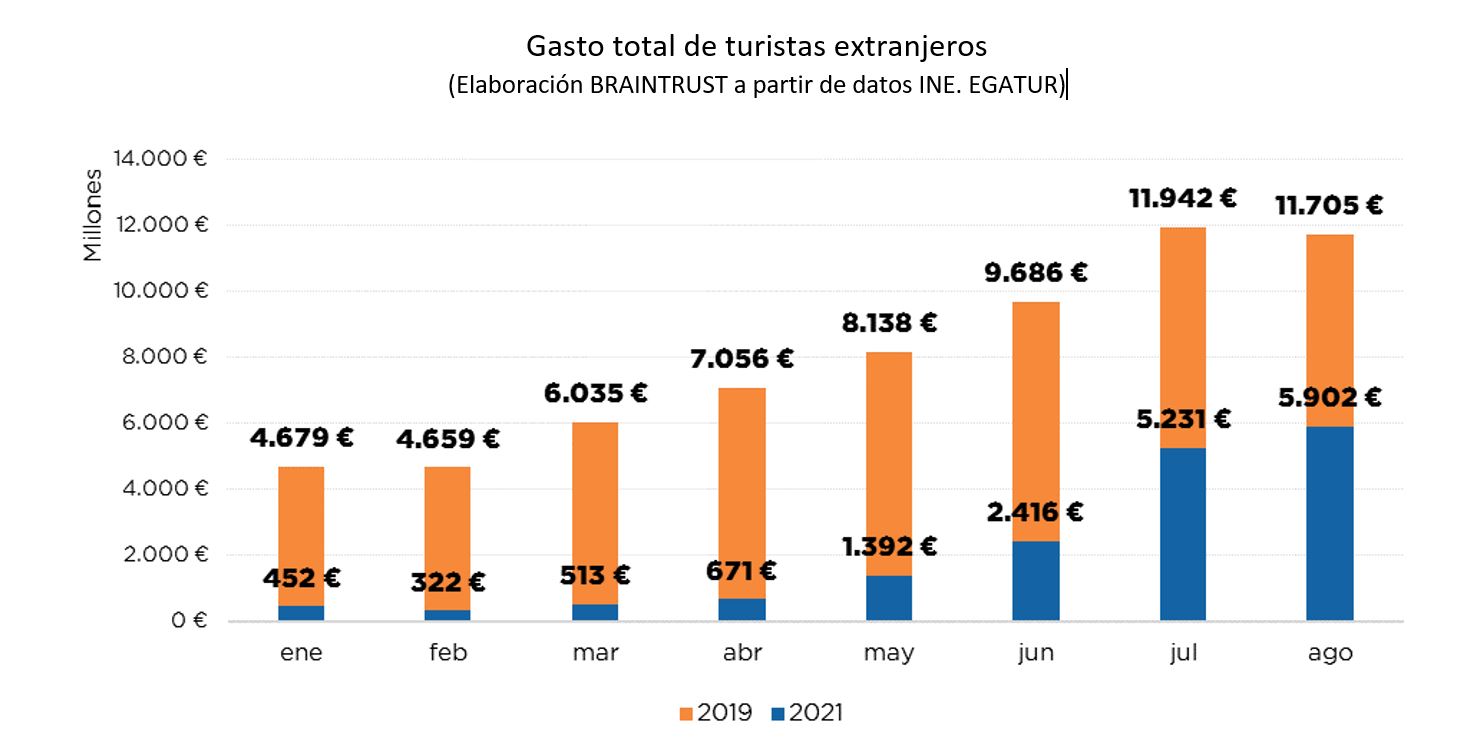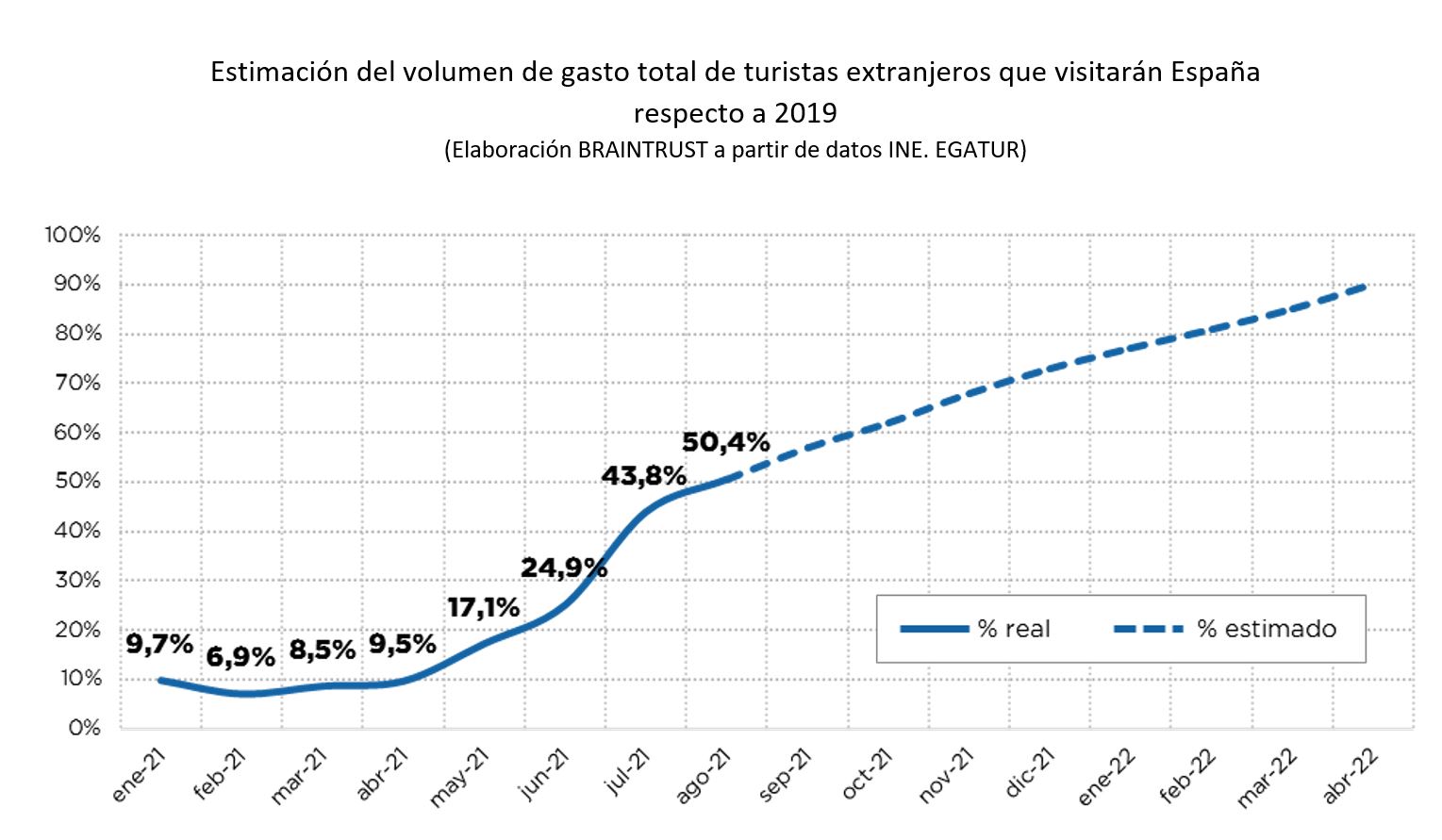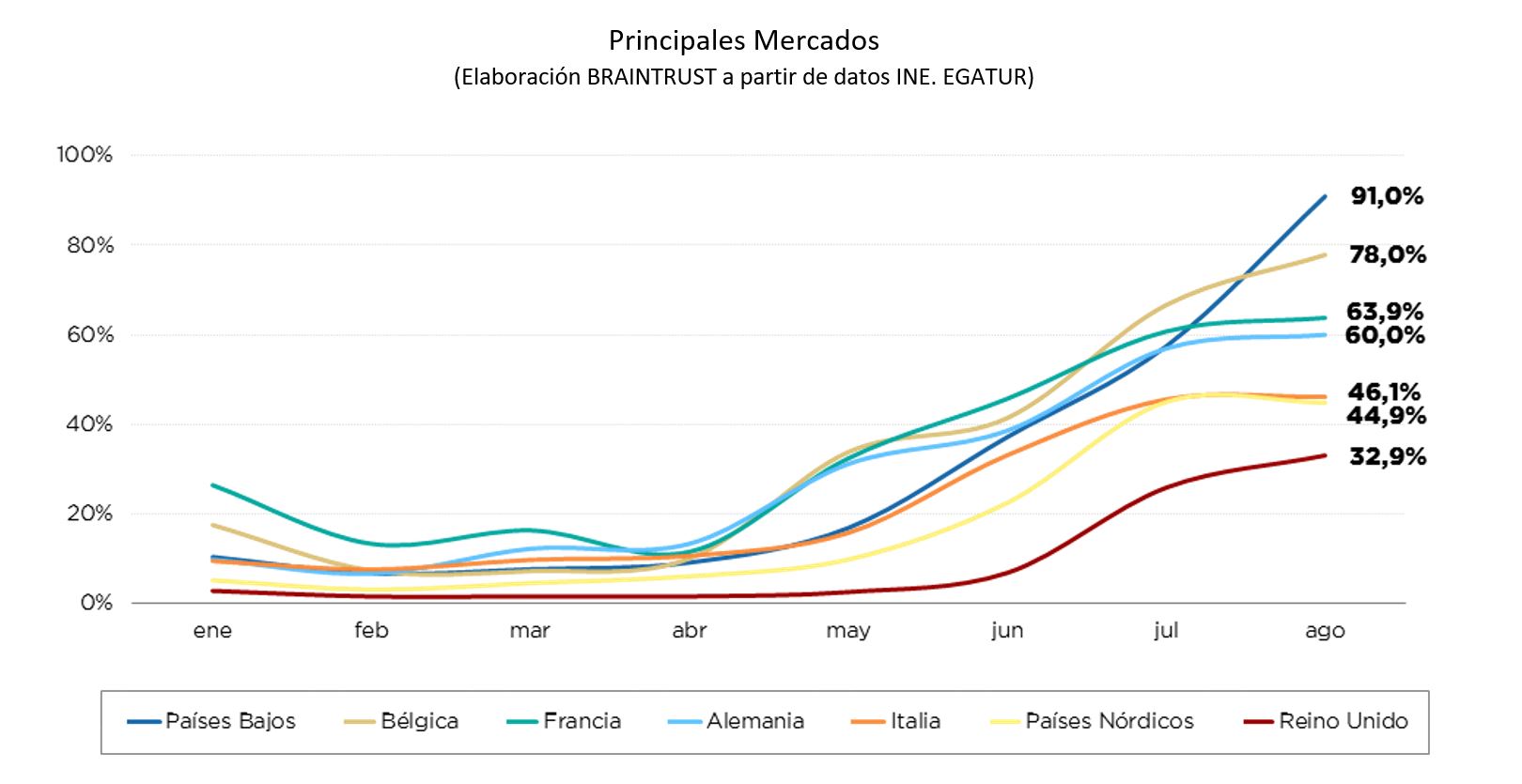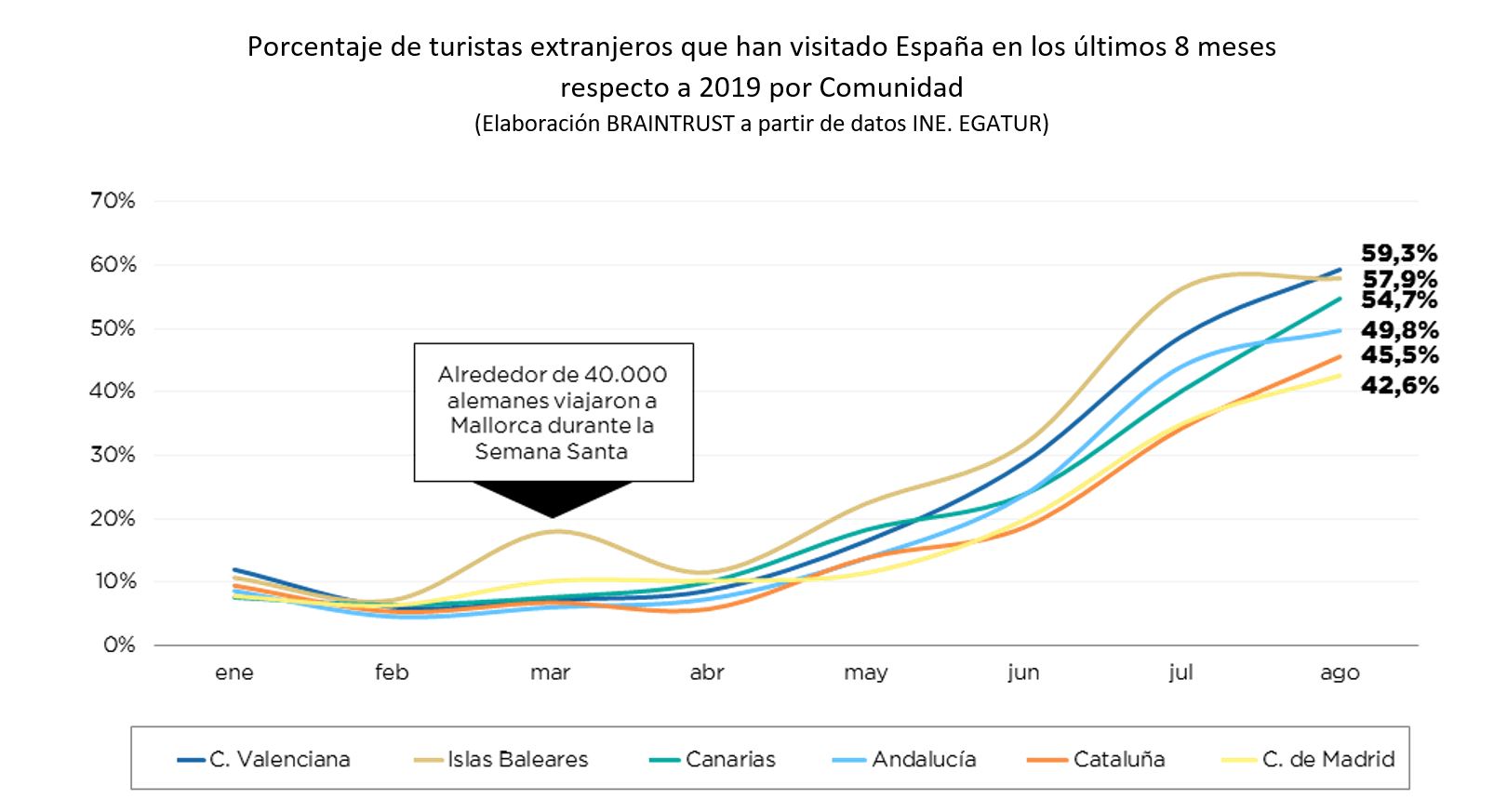BRAINTRUST predicts in a new study on foreign tourism spending, that Easter 2022 would be reaching figures close to 2019, depending on the current pace of recovery of international markets. In a new wave of their Tourism Barometer, they point to an exponential increase in international travelers in the coming months, between now and April next year, where numbers similar to the pre-pandemic stage could be reached.
Vacation inbound tourism is recovering month after month
Spending by foreign tourists is recovering, and despite the fact that we are still somewhat far from the 2019 data, the gap is narrowing month by month; if in January the total spending of international tourists decreased by 90.3% compared to the same month of 2019, in August this variation was 49.6%, reaching 5.9 million euros, so the trend is positive as seen in the following graph:

Analyzing the trend of total spending in recent months, and if no new waves occur and the borders remain mostly open as they have been so far, it could be estimated that during Easter Week 2022 the volume of foreign tourists visiting Spain would be practically the same as that which visited us in 2019, with a recovery of around 90% of international spending, which would take us practically to pre-pandemic volumes.

For Angel García Butragueño, Co-Director of the Tourism Barometer, and Director of Tourism at BRAINTRUST, "The current situation of the vaccination program in Europe has allowed us a gradual recovery of foreign tourists this summer. Without new waves and with an exhaustive control of the risk of contagion, Spain could recover a large part of foreign tourism spending by Easter 2022. The next few months will be key for the confirmation of an unrestricted Europe, and an increase in movements, which would facilitate the recovery of pre-pandemic figures in the inbound holiday segment, giving a breath of fresh air to the industry, which is preparing for a definitive transformation towards a new post-COVID era. The forecasts of the BRAINTRUST Barometer should not be a barrier to seize the opportunity and prepare ourselves for a different, more sustainable, more innovative and more profitable tourism, which will help us to remain world leaders. The real challenge lies in assuming the pre-pandemic figures while destinations prepare to undertake the transformations pursued by the Next Generation European funds, through the Tourism Modernization and Competitiveness Plan of the Secretary of State for Tourism".
Four key countries in the recovery
The markets that are performing best, and therefore contributing most to this positive trend, are the Netherlands, Belgium, France and Germany, while the United Kingdom is the one that is punishing us the most.
The evolution of the Netherlands has been significantly better than the rest, since in August only 9% less visited us than in August 2019; the Belgians have also responded well in the summer months, reaching 78% of visitors, and French and Germans have stayed at around 60%.
The opposite side of the coin is the United Kingdom. The biggest power for Spain in terms of international tourism was held back by the mobility restrictions and quarantines imposed by its government, causing during the first five months of the year barely 2% of Britons to arrive in Spain than arrived in the same months of 2019, and in August they trailed with only 32.9%.
Percentage of foreign tourists who have visited Spain in the last 8 months compared to 2019 by country of origin.

Evolution of the most demanded Autonomous Regions
The six most visited Autonomous Communities in Spain have had a similar behavior in terms of the reception of foreign tourists so far this year with respect to 2019 but with certain nuances:

- Practically all the Communities started the year with only 10% of the tourists they received in 2019.
- The Balearic Islands experienced an upturn in March, just when Germany took the islands off its "black list", and thousands of Germans decided to spend Easter week here.
- From April onwards, although all the Communities are advancing in parallel, the gap is opening up, with the sun and beach areas gaining more tourists.
- In August, the Valencian Community, the Balearic Islands and the Canary Islands recovered between 55% and 60% of their tourists, while Catalonia and the Community of Madrid lagged slightly behind.
For José Manuel Brell, Co-Director of the Tourism Barometer and Partner in charge of the Quantitative Studies and Models practice at BRAINTRUST: "This summer's figures allow us to be optimistic about the future, with the 7 major markets on the road to recovery - although the UK has been slower, the exit from the red traffic light has been a great relief in recent weeks - and with the 6 main Autonomous Communities, with good trends in their numbers of foreign tourists and their consequent spending. Despite the policies promoted by some destinations looking for higher spending tourists, the industry must first recover the closest markets, so as to facilitate the return to employment of the families involved in this sector, while we make the transition of the Spanish tourism model. In this sense, the collaboration of public bodies with private companies is essential to maintain our position at the top of the world podium as we move into a new post-pandemic era".






